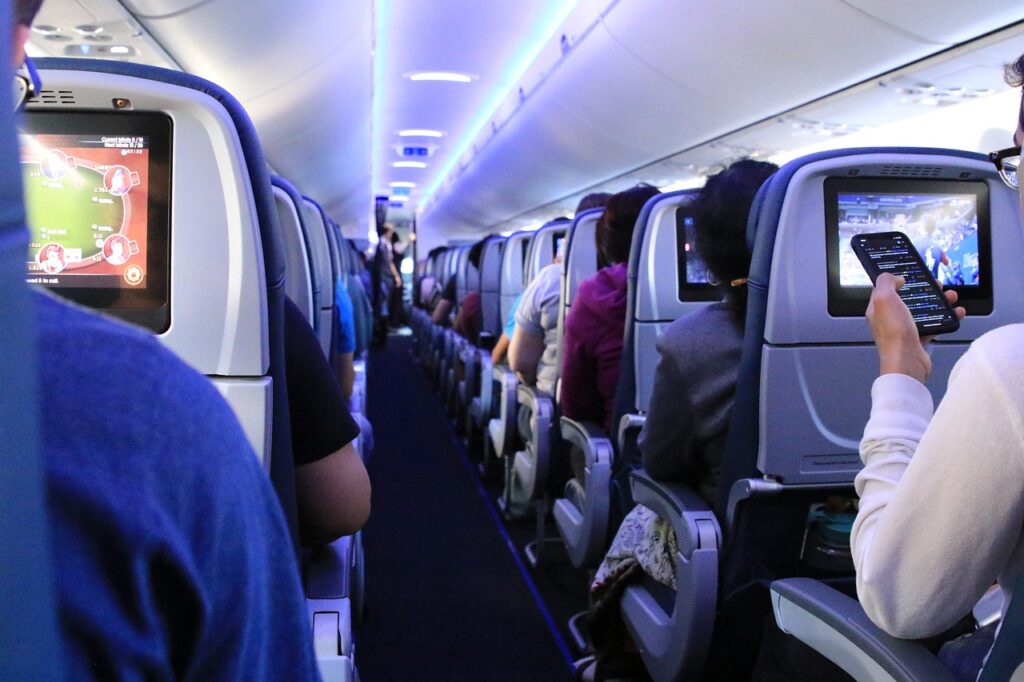Global Avionics Round-Up from Aircraft Value News (AVN)
How inflight connectivity is reshaping cockpits and airline strategy.

The modern traveler’s expectations have evolved significantly over the past decade, with inflight Internet connectivity becoming a critical component of the passenger experience.
No longer is WiFi a luxury—it’s a necessity for business professionals, families, and entertainment seekers alike. As passengers demand seamless and high-speed Internet during flights, airlines are scrambling to meet this growing need.
However, the ramifications of increasing connectivity extend beyond passenger convenience and entertainment. This surge in demand for inflight WiFi is having a profound impact on avionics.
Airlines have recognized that inflight connectivity is essential for staying competitive, and they’ve invested heavily in satellite-based systems to provide fast, reliable Internet access at cruising altitudes.
Early iterations of inflight Internet relied on ground-based towers, which limited both speed and coverage, particularly over oceans. Today, satellites—particularly those in low earth orbit (LEO) constellations—are revolutionizing the inflight WiFi landscape, offering near-global coverage and faster speeds.
Airlines like Delta, United, and American Airlines have partnered with satellite providers like ViaSat and Inmarsat to roll out faster WiFi across their fleets. However, this isn’t a simple plug-and-play system. The integration of WiFi systems affects aircraft design and performance, requiring updates to the avionics systems pilots rely on in the cockpit.
To accommodate the growing demand for WiFi without compromising the safety and reliability of cockpit systems, avionics manufacturers have been forced to innovate. They are developing advanced filtering systems and ensuring that WiFi signals don’t interfere with sensitive cockpit electronics.
Airbus and Boeing have recently initiated different approaches to integrating connectivity into their new-generation aircraft. Airbus, for example, has integrated WiFi systems more seamlessly into the avionics of its A350 and A320neo families, while Boeing has focused on upgrading its 737 MAX and 787 Dreamliner fleets with advanced connectivity solutions.
As inflight entertainment systems (IFE) become more sophisticated, they place additional demands on aircraft systems. Today’s passengers expect personalized, on-demand streaming services, sometimes directly to their devices. This increasing data load puts further pressure on the inflight WiFi infrastructure, requiring more powerful hardware and software solutions.
Avionics systems are increasingly sharing the aircraft’s bandwidth with these IFE systems. This has become a delicate balancing act for airlines, particularly on long-haul flights where the use of both WiFi and entertainment systems is prolonged.
Airlines are taking proactive steps to ensure that inflight WiFi enhancements don’t jeopardize cockpit functionality. For example, Delta Airlines recently announced a partnership with SpaceX’s Starlink satellite network, aiming to provide high-speed WiFi across its entire fleet.
Starlink’s low-latency Internet service would not only improve passenger experience but also help provide real-time data to pilots and crew in ways that were previously impossible. United Airlines, on the other hand, has focused on upgrading its WiFi equipment to more advanced antennae that ensure better connectivity without compromising cockpit operations.
This article also appears in the October 21 issue of our partner publication Aircraft Value News.
John Persinos is the editor-in-chief of Aircraft Value News. You can reach John at: jpersinos@accessintel.com